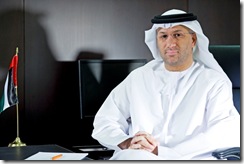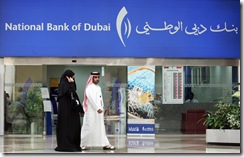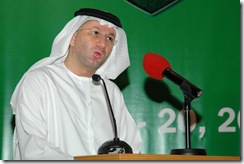With the UAE’s mobile penetration rate above 200 per cent, and the country’s two serviced operators pushing technological advances to their networks and services all the time, regulating the market in a manner that enhances and not harms it is a delicate balance to maintain. The UAE’s Telecommunications Regulatory Authority has been undertaking this task since 2004, and its director general, Mohamed Al Ghanim highlights the regulator’s policy direction and areas of focus
Mohamed Al Ghanim believes customers must be offered a choice of alternatives whenever possible
Speaking at a conference in Dubai late last year, Etisalat’s chief corporate aff
Speaking at a conference in Dubai late last year, Etisalat’s chief corporate affairs officer Nasser Bin Obood said he believed it was time for the UAE’s telecom regulator, TRA to allow the operator to exercise greater flexibility with respect to the setting of competitive tariffs. Given Etisalat’s incumbent position in the country, the telco is deemed to have significant market power and as such has its pricing plans and tariffs heavily regulated by the TRA.
“We cannot push into some of the price points that customers would like,” Bin Obood said at the event. “The time has come for the incumbent to have some relief (from the regulator),” he added. Bin Obood referred to the fact that market competitor Du had announced the addition of its three millionth mobile subscriber at the time, suggesting the second operator was of sufficient size for there to be a move to a more competitive pricing regime in the UAE.
Indeed, almost a year on second operator Du reported a 51 per cent rise in its subscriber base over the past year to 3.14 million customers end-Q309. Revenues for the quarter amounted to AE D1.33 billion (US$362 million) consistent with the previous quarter and up 25.8 per cent year-on-year. EBIT DA came in at AE D297.3 million, representing an increase of 22.8 per cent quarter-on-quarter, and 192.9 per cent year-on-year. Net profit (before royalty) was AE D157.1 million for the quarter, up 398 per cent on the same period last year and up 36 per cent quarter-on-quarter.
During the third quarter Du’s pre and post-paid mobile subscriber numbers saw continued growth with the addition of 25,900 post-paid mobile subscribers, representing a 55 per cent increase in subscriber additions over the second quarter as a result of a continued marketing strategy to increase market share. Post-paid customers represented 3.6 per cent of Du’s mobile business. Prepaid mobile subscribers witnessed the addition of 207,300 subscribers over the quarter.
Du’s capital expenditure programme is set to exceed AE D 2 billion in 2009, with AE D 424 million accounted for during Q309 bringing year to date expenditure to AE D 1.47 billion. Such glowing financial results from the second operator do appear to offer credence to Etisalat’s opinion that Du need not be protected by the TRA any longer, and it is balancing these types of opposing views that Mohamed Al Ghanim is charged with achieving.
“Comparing the situation in the three major types of telecom services provided by Etisalat and Du (fixed voice, mobile voice and fixed Internet) the TRA recorded a decent increase of customers in both mobile voice and fixed Internet services in Q209,” comments Al Ghanim, suggesting the market is still growing be it at lower levels than it previously did. “The number of active mobile subscribers was around 9.4 million at the end of 2008, 9.6 million in March 2009 and 9.7 million in June 2009.”
With respect to fixed broadband Internet subscribers in the UAE, the number grew from around 5.3 million at the end of 2008 to 5.9 million end-March 2009 and 6.2 million end-June. According to Al Ghanim, in general competition is stronger in the services where both operators have national coverage, which are in the areas of mobile voice services and mobile data services. And thanks to the carrier selection service, where fixed voice customers have an opportunity to chose either of the two operators to provide national and international fixed voice service, there has been an increase in competition and reductions in prices.
Carrier pre-selection is aimed at assisting to level the playing field given that Du still does not offer fixed line services outside of Dubai, though the intention was for the country’s second operator to provide national services for all of is offerings.
“Consumers in the UAE should have a choice of providers of telecom services, no matter where they live,” asserts Al Ghanim. “There may be instances where the operators must work in cooperation with one another to share facilities in order to enable consumer choice, and it may take time to put such operations into effect, but in principle, there is no exclusivity in the UAE for telecom providers,” he adds.
The mobile penetration rate in the UAE exceeds 200 per cent, one of the highest in the region
There has been growing speculation that given the development of the UAE telecom market, a third operator is likely to be considered in the not-too-distant future. According to the TRA plans for any new operator will likely gather pace over the next few months with a study on the feasibility of such a player and its impact on the market being conducted.
“We have not yet decided but we are still observing if the market can accommodate a third player,” Al Ghanim says. What is set to arrive in the UAE market in the near future though is the introduction of mobile number portability, which will allow subscribers from the two existing operators to port their numbers across from one network to the other. It is a market development that is set to require the participation of all market stakeholders, and it is hoped that it can be implemented as early as H110.
Typically, it is the operator with the largest established subscriber base that stands to lose the greater number of users once portability is introduced. A number of factors that operators should consider when preparing for number portability implementation include:
Business process
Most important for customers will be simplicity (one-stop shopping), reliability, short duration and the ease of prepaid porting The possibility to port number blocks is critical for corporate customers.
Porting fees
Ideally, there should be no porting fees for customers If porting fees are used, they should be low, cost oriented inter-operator fees.
Marketing
Market education proves to be important for MN P success.
Technical solution
Details of the technical solution are unimportant for the customer as long as they do not impact the reliability of the process or the quality of services after porting. National testing is important to ensure sufficient quality is maintained.
The TRA has also been pushing the boundaries in other directions. At the end of October a consortium comprising of Etisalat, Du, Abu Dhabi Media Company, Dubai Media Incorporated, Emirates Communications and Technologies Company, a subsidiary of TECOM Investment, and MBC has been granted a licence to provide mobile TV broadcasting services for 10 years. The licence fee amounts to AE D 17 million (US $4.6 million), with an additional royalty also be applied on the company.
The TRA has agreed to grant the consortium exclusivity to provide the broadcast mobile TV for five years that will end on December 31, 2014.
The consortium has selected to utilise DVB -H technology, and will provide its services to Etisalat and Du, which will in turn offer a variety of competitive and exclusive mobile TV packages to their subscribers. With that, the TRA says it has maintained competition between the companies and reduced the capital expenditure of building networks in the UAE, which will have a positive impact on end-user pricing.
Al Ghanim says the TRA plans to focus on child online protection in the future
The company is expected to provide at least 13 channels for subscribers of the live TV broadcasting service. The service is expected to commence in Q410 and will cover majority of the UAE population. The UAE is the first country to issue such licence in the region.
Looking ahead, child online protection will be a subject the TRA plans to focus on given the success it has already enjoyed with the implementation and familiarisation effort it has undertaken with respect to the .ae domain registration. The domain registration has become a unique opportunity for individuals, local companies and international institutions that are keen to attract customers in the UAE.
“Since .ae Domain Administration launched in August 2008, the .ae domain name has become well known in the UAE market. The factors that led to the progress achieved
include: easy registration, choice of registrar, and well defined policies that maintain registration and disputes,” Al Ghanim comments.





0 comments ↓
There are no comments yet...Kick things off by filling out the form below.
Leave a Comment